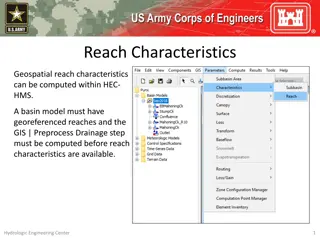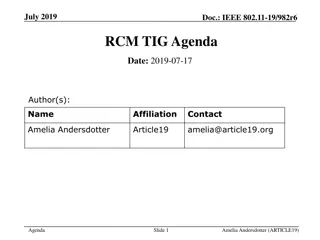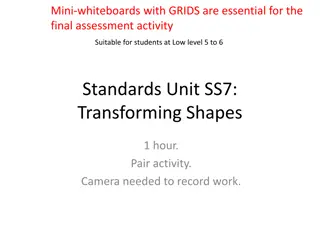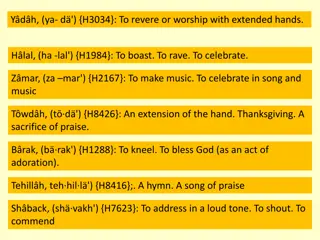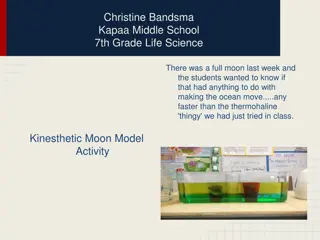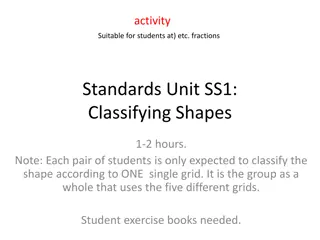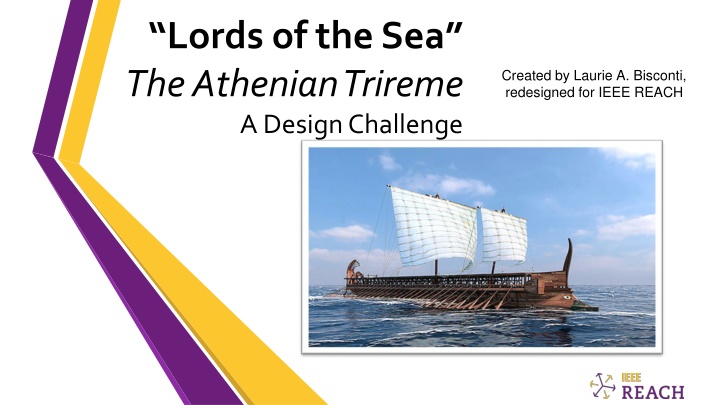
Design Challenge: Crafting a Lightweight Vessel for Maximum Speed and Cargo Capacity
Delve into the complexities of designing a lightweight trireme vessel capable of carrying a crew of 200 while maintaining top speed and flexibility. Explore the requirements, specifications, and calculations involved in constructing a floating structure to hold maximum cargo load and travel swiftly through water. Get hands-on with foam core, glue, and tape to create a vessel that stays afloat and performs admirably during testing.
Download Presentation

Please find below an Image/Link to download the presentation.
The content on the website is provided AS IS for your information and personal use only. It may not be sold, licensed, or shared on other websites without obtaining consent from the author. If you encounter any issues during the download, it is possible that the publisher has removed the file from their server.
You are allowed to download the files provided on this website for personal or commercial use, subject to the condition that they are used lawfully. All files are the property of their respective owners.
The content on the website is provided AS IS for your information and personal use only. It may not be sold, licensed, or shared on other websites without obtaining consent from the author.
E N D
Presentation Transcript
Lords of the Sea The Athenian Trireme A Design Challenge Created by Laurie A. Bisconti, redesigned for IEEE REACH
The Purpose To understand the tremendous difficulty to design a lightweight vessel such as the trireme that could carry a crew of 200 and maintain maximum speed and flexibility.
The Problem Design and build a floating structure to be tested in class to hold as muchas possible before capsizing or sinkingand travel with maximum speed through the water.
Specifications Vessel may consist of only foam coreand glue/tape All materials provided in lab Material used may not exceed 10 x 10 Vessel must float Vessel may not rest on bottom of tank when tested Vessel must have a hook (paper clip) on its bow
Consider this How will we know we have built the craft to hold the maximum cargo load?
Planning Use the following slides to complete your sketches and calculations in your packet
What is displacement??? Pools Bathtubs Kitchen Sinks Turkey Fryers
Dimension your vessel Length Width Height 2 3 4
Determine Volume of Barge 2 3 4 Length x Width x Height = 24 cu in
How many inches in a cubic foot? 1728
Divide Barge Volume by the # of cubic inches in a cubic foot. 2 3 4 24cu / 1728 = .013 cubic feet
The weight of water 64 pounds per cubic foot
Determinepounds of water displaced by the barge. Multiply Cu. Ft. of barge by weight of water per cubic foot .013 x 64 = .832 pounds displaced
Determine the mass of the barge Approximately 100 grams 2 3 4
How many grams are in a pound? 1 pound = 453.6 grams
Convert grams to pounds 100 / 453.6 = .22 pounds
Subtract weight of barge from weight of displaced water to find penny load. .832 - .22= .612 pounds of pennies
Convert penny load lbsinto mass .612 x 453.6 = 277 grams of pennies
What is the mass of a penny? 2.78 grams
Divide allowable penny mass by the mass of one penny to determine the number of pennies the barge can hold 277 / 2.78 = 99 pennies
Why could this number be less? Workmanship Loading Other variables
Now that you have a plan You and your design team will meet to build your vessel.




